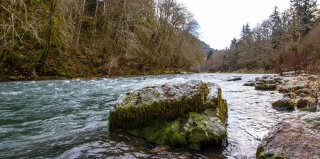Climate Change Impacts on Freshwater Resources
Overview
Clean freshwater, comprising both groundwater and surface waters, is essential to life on Earth. People need water for drinking and sanitation, and all plants and animals need water to survive. Water also supports agriculture, energy production, navigation, manufacturing, and many other uses. In addition, freshwater supports many ecosystems and provides habitat and breeding grounds for animals.
-
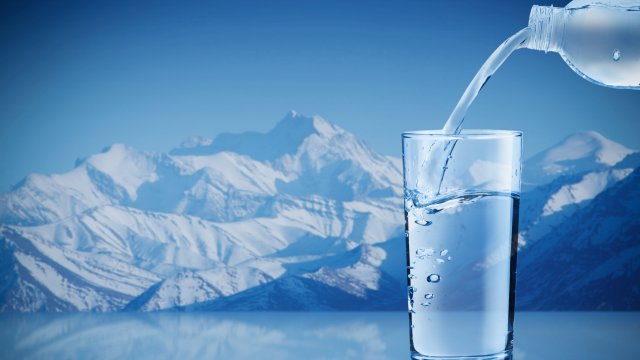
Less water for drinking. Climate change is likely to increase people’s demands on water while also decreasing water supplies in some parts of the country.
-

Less water for agriculture. The Midwest produces many high-value “specialty” crops, such as apples, cherries, and pumpkins.31 These crops are particularly sensitive to drought and other climate stressors that can decrease water supplies for agriculture.32
-

Groundwater depletion. The use of groundwater for crop irrigation has increased significantly over the past century.33 Irrigation accounts for 70% of all groundwater withdrawals nationwide.34
-
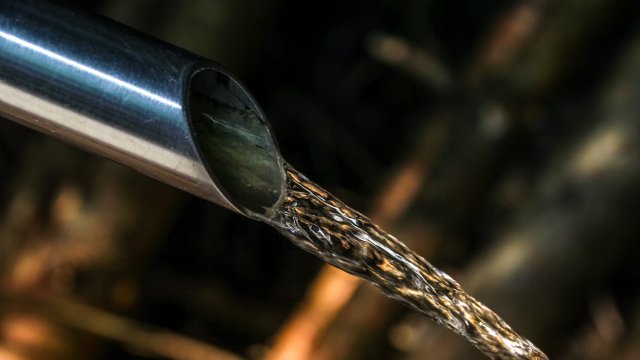
More infrastructure failures. As the climate changes, more frequent and intense rainfall can threaten dams in some regions of the country. In fact, more than 15,000 dams in the United States have been identified as “high risk” for potential failure.35
-
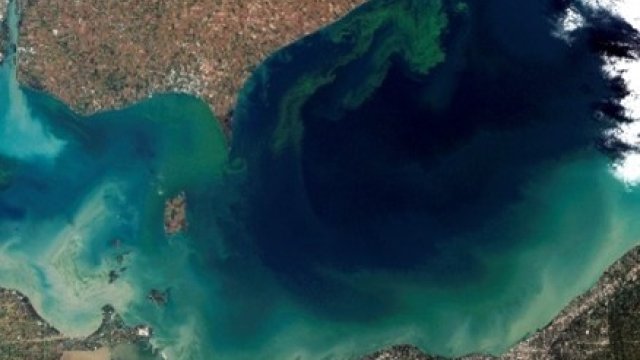
Increased runoff and harmful algal blooms. In the summer, algae develop on Lake Erie due to excess agricultural runoff and warm water temperatures.36 As a result, a dead zone forms at the bottom of the lake that cannot support wildlife. Water bodies like Lake Erie may become more stressed as more frequent and intense rain events lead to more runoff.
Climate change affects where, when, and how much water is available. These effects vary by region and can harm the health of people and ecosystems. For example, rising temperatures, drought, and reduced snowfall are putting more pressure on water supplies in the Southwest.1 In contrast, the Northeast and Southeast may experience more extreme storms and heavy rains, which can put aging water infrastructure (such as dams, sewers, and water treatment facilities) at risk.2
To help reduce climate risks, many water utilities are considering potential impacts to their systems and taking steps to build resilience. Government agencies are supporting many resilience projects specifically focused on water resources. Individuals can also take steps to use water efficiently and help keep water bodies clean.
Explore the sections on this page to learn more about climate impacts on water resources:
- Top Climate Impacts on Freshwater Resources
- Freshwater Resources and the Economy
- Population Impacts
- What We Can Do
- Related Resources
Top Climate Impacts on Freshwater Resources
Climate change may disrupt the stability of water resources at local, regional, and national scales. Three key impacts are described in this section.
1. Reduced Water Supplies
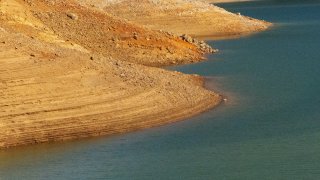
In many areas of the country, climate change is likely to increase people’s demand for water while also shrinking water supplies. In mountainous and cold-weather regions, many people depend on snowpack for drinking water, agriculture, and other uses. “Snowpack” refers to the layers of snow that accumulate over long periods of cold weather. As it melts, snowpack feeds into streams and becomes an important freshwater resource.
In the West, warmer temperatures and changes in precipitation are reducing snowpack.3 In some areas, less snow is falling, as more precipitation is falling as rain rather than snow.4, 5 Higher temperatures are also causing snowpack to melt earlier.6 All of these changes affect when and how much water is available.
Even without the impacts of climate change, the United States’ water supply has begun to diminish.8 Much of our water supply comes from groundwater held in underground formations called aquifers. In some parts of the nation, increased demand for water has led to pumping groundwater from aquifers faster than they can be naturally refilled. Persistent droughts in some areas are accelerating this decline.9 Warming temperatures from climate change may increase the intensity of droughts, especially in the West.10
2. Impaired Water Quality
Climate change is expected to harm water quality. For example, increased rainfall can lead to more runoff of sediments, nutrients, pathogens, and other substances into water bodies. Increases in nutrient runoff, along with warming water temperatures, can also lead to harmful algal blooms. These algal blooms can kill fish, shellfish, and other animals. They can also make drinking and recreational water sources unsafe for people and pets.
Climate change threatens to increase the salinity of water bodies and groundwater through saltwater intrusion.11 Rising sea level and increased drought can enable saline water to advance farther upstream and inland in estuaries, wetlands, and aquifers. Higher salinity can contaminate freshwater supplies and harm aquatic plants and animals. These impacts are especially likely to happen in low-lying areas such as Louisiana, Florida, and portions of California and the mid-Atlantic.
3. Stress on Water Infrastructure

As much of the U.S. water infrastructure nears the end of its planned life, climate change impacts, such as more extreme weather events, will further strain its ability to operate well.12 Heavy rainfall events can cause dams and levees to fail.13 In addition, climate impacts on other parts of society may have indirect effects on water utilities.14 For example, storms that damage power generation or distribution might shut down water and wastewater plants.15 In other cases, there may be competing needs from surface reservoirs, which face demands as a drinking water supply as well as a source for generating electricity.
For more specific examples of climate change impacts in your region, please see the National Climate Assessment.
Freshwater Resources and the Economy
The United States uses water to grow crops, raise livestock, produce energy, manufacture and distribute goods, and support many other parts of the economy. Nationwide, healthy watersheds also provide millions of jobs as well as revenues in tourism, recreation, fishing, and other industries.16
In addition, watersheds provide a host of ecosystem services. These beneficial services are the free work that communities do not have to do, or pay for, themselves. While it can be hard to put a dollar value on these services, they provide tremendous benefits to society. Among these benefits are water filtration and storage, soil formation, carbon storage, flood control, erosion control, and recreation. Watersheds also function as critical wildlife corridors, providing passage for animals during their life cycles.
Clean water is also essential to human health. Water utilities spend more than $109 billion each year to provide safe drinking water and wastewater services in the communities they serve.17 Nonetheless, more than 7 million people get sick from diseases spread through water each year.18 These illnesses cost the U.S. health care system more than $3 billion annually, and climate impacts are expected to increase risk of exposure to water-borne pathogens and water-treatment expenses.19, 20, 21
Population Impacts
Certain groups of people in the United States, including Indigenous communities, low-income communities, communities on the U.S.–Mexico border, migrant farm workers, and others lack access to clean water and sanitation services.22 Climate impacts will compound this situation.
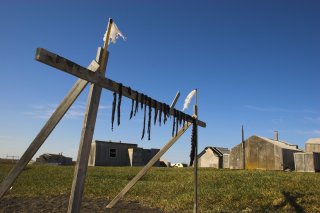
For example, many rural residents currently depend on community or private wells where water is treated minimally or not at all.23 Some small and rural water utilities also struggle to provide safe and affordable drinking water and wastewater services. Barriers to providing these services can include limited resources, extreme climate, or remote locations.24
Many Indigenous communities lack access to water for drinking, agriculture, fisheries, and other uses.25 Climate stressors can worsen this problem. For example, decreasing snowpack, decreasing streamflow, and warmer water temperatures are harming salmon populations in the Northwest. Salmon loss affects Indigenous peoples’ economies and cultural identities.26 In Alaska, traditional hunting and subsistence practices have been disrupted by ice melting due to rising temperatures.27
Outside of some U.S.–Mexico border cities, unincorporated communities called “colonias” lack both water and wastewater services.28 Some border cities also face stormwater and pollutant runoff problems.29 These areas are often prone to flooding and increases in heavy rains caused by climate change are expected to worsen.30
What We Can Do
We can reduce climate change’s impact on water resources in many ways, including the following:
- Create resilient water utilities. EPA’s Creating Water Resilient Utilities provides tools, training, and assistance to help utilities assess climate risks to their systems and increase resilience.
- Build sustainable water infrastructure. Communities can maintain and renew aging water systems with planning tools, financing help, best practices, and new technologies.
- Use water wisely. People can reduce water use in their homes and yards by repairing leaks, choosing WaterSense-labeled products, planting native or drought resistant vegetation, and many other actions.
- Reduce runoff. Individuals can help reduce nutrient pollution. For example, use fertilizers on yards only when necessary and clean up pet waste.
- Work with nature. Communities can use nature-based solutions to help restore aquatic habitats and promote the resilience of freshwater resources.
- Learn about local water quality. Use EPA’s How’s My Waterway tool to find out the condition of water bodies in your area.
Related Resources
- Fifth National Climate Assessment, Chapter 4: “Water.”
- Ground Water and Drinking Water. Provides information about public water systems and EPA standards to protect water quality.
- Municipal Wastewater. Provides information about wastewater collection and treatment and EPA standards to protect waters.
- EPA: U.S.–Mexico Border Water Infrastructure Grant Program. Funds projects to improve wastewater services in the border region.
- Small and Rural Water System Resources. Provides funding, tools, and resources to help small and rural communities improve wastewater treatment services. The U.S. Department of Agriculture also provides loans and technical assistance for water programs in rural areas.
- Centers for Disease Control and Prevention: Drinking Water. Provides education and resources about ensuring healthy water for drinking.
- Seasonality and Climate Change: A Review of Observed Evidence in the United States (pdf) (7.79 MB, December 2021). Summarizes the state of the science on observed changes relating to seasonality in the United States, including observed impacts on the water resources.
Endnotes
1 Lall, U., et al. (2018). Ch. 3: Water. In: Impacts, risks, and adaptation in the United States: Fourth national climate assessment, volume II. U.S. Global Change Research Program, Washington, DC, p. 150.
2Lall, U., et al. (2018). Ch. 3: Water. In: Impacts, risks, and adaptation in the United States: Fourth national climate assessment, volume II. U.S. Global Change Research Program, Washington, DC, p. 150.
3 White, D. D., et al. (2023). Ch 28: Southwest. Fifth National Climate Assessment. U.S. Global Change Research Program, Washington, DC, p. 28-9.
4Payton, E. A., et al. (2023). Ch. 4: Water. Fifth National Climate Assessment. U.S. Global Change Research Program, Washington, DC, p. 4-8.
5 Marvel, K,, et al. (2023). Ch. 2: Climate Trends. Fifth National Climate Assessment. U.S. Global Change Research Program, Washington, DC, p. 2-22.
6 Payton, E. A., et al. (2023). Ch. 4: Water. Fifth National Climate Assessment. U.S. Global Change Research Program, Washington, DC, p. 4-8.
7 National Aeronautics and Space Administration (NASA) Earth Observatory. (2021). California reservoirs reflect deepening drought. Retrieved 2/3/2022.
8 Lall, U., et al. (2018). Ch. 3: Water. In: Impacts, risks, and adaptation in the United States: Fourth national climate assessment, volume II. U.S. Global Change Research Program, Washington, DC, p. 147.
9 Payton, E. A., et al. (2023). Ch. 4: Water. Fifth National Climate Assessment. U.S. Global Change Research Program, Washington, DC, p. 4-10.
10 Payton, E. A., et al. (2023). Ch. 4: Water. Fifth National Climate Assessment. U.S. Global Change Research Program, Washington, DC, p. 4-18.
11 Payton, E. A., et al. (2023). Ch. 4: Water. Fifth National Climate Assessment. U.S. Global Change Research Program, Washington, DC, p. 4-5.
12 Lall, U., et al. (2018). Ch. 3: Water. In: Impacts, risks, and adaptation in the United States: Fourth national climate assessment, volume II. U.S. Global Change Research Program, Washington, DC, p. 154.
13 Lall, U., et al. (2018). Ch. 3: Water. In: Impacts, risks, and adaptation in the United States: Fourth national climate assessment, volume II. U.S. Global Change Research Program, Washington, DC, p. 149.
14 Payton, E. A., et al. (2023). Ch. 4: Water. Fifth National Climate Assessment. U.S. Global Change Research Program, Washington, DC, p. 4-5.
15 Payton, E. A., et al. (2023). Ch. 4: Water. Fifth National Climate Assessment. U.S. Global Change Research Program, Washington, DC, p. 4-31.
16 U.S. Environmental Protection Agency (EPA). (2012). The economic benefits of protecting healthy watersheds (pdf). EPA 841-N-12-004.
17 EPA. (2021). Water utilities as anchor institutions: Impacting the equity, social, and economic fabric. EPA 832-F-21-034.
18 U.S. Centers For Disease Control and Prevention (CDC). (2021). Implications of Water Borne Disease Estimates. Retrieved 8/20/2024.
19 U.S. Centers For Disease Control and Prevention (CDC). (2021). Implications of Water Borne Disease Estimates. Retrieved 8/20/2024.
20 Payton, E. A., et al. (2023). Ch. 4: Water. Fifth National Climate Assessment. U.S. Global Change Research Program, Washington, DC, p. 4-31.
21 Gamble, J.L., et al. (2016). Ch. 6: Water-related illness. In: The impacts of climate change on human health in the United States: A scientific assessment. U.S. Global Change Research Program, Washington, DC.
22 Gamble, J.L., et al. (2016). Ch. 6: Water-related illness. In: The impacts of climate change on human health in the United States: A scientific assessment. U.S. Global Change Research Program, Washington, DC, p. 170.
23 Gamble, J.L., et al. (2016). Ch. 6: Water-related illness. In: The impacts of climate change on human health in the United States: A scientific assessment. U.S. Global Change Research Program, Washington, DC, p. 163.
24 EPA. (2021). Learn about small wastewater systems. Retrieved 3/21/2022.
25 Payton, E. A., et al. (2023). Ch. 4: Water. Fifth National Climate Assessment. U.S. Global Change Research Program, Washington, DC, p. 4-22.
26 Lall, U., et al. (2018). Ch. 3: Water. In: Impacts, risks, and adaptation in the United States: Fourth national climate assessment, volume II. U.S. Global Change Research Program, Washington, DC, p. 150.
27 Markon, C., et al. (2018). Ch. 26: Alaska. In: Impacts, risks, and adaptation in the United States: Fourth national climate assessment, volume II. U.S. Global Change Research Program, Washington, DC, pp. 1204–1205.
28 EPA. (2021). Learn about small wastewater systems. Retrieved 3/21/2022.
29 Gonzalez, P., et al. (2018). Ch. 25: Southwest. In: Impacts, risks, and adaptation in the United States: Fourth national climate assessment, volume II. U.S. Global Change Research Program, Washington, DC, p. 1113.
30 White, D. D. et al. (2023). Ch. 28: Southwest. Fifth National Climate Assessment. U.S. Global Change Research Program, Washington, DC, p. 28-11.
31 U.S. Department of Agriculture. (N.D.). Agriculture in the Midwest. Retrieved 3/21/2022.
32 National Integrated Drought Information System. (N.D.). By sector: Agriculture. Retrieved 3/21/2022.
33 Lall, U., et al. (2018). Ch. 3: Water. In: Impacts, risks, and adaptation in the United States: Fourth national climate assessment, volume II. U.S. Global Change Research Program, Washington, DC, p. 159.
34 Dieter, C.A., et al. (2018). Estimated use of water in the United States in 2015. U.S. Geological Survey Circular 1441, p. 7. https://pubs.usgs.gov/circ/1441/circ1441.pdf
35 Lall, U., et al. (2018). Ch. 3: Water. In: Impacts, risks, and adaptation in the United States: Fourth national climate assessment, volume II. U.S. Global Change Research Program, Washington, DC, p. 154.
36 Almeida, Z. (2015). How is fish habitat affected? Lake Erie’s dead zone. Ohio Department of Natural Resources, Division of Wildlife. Technical Bulletin No. 3. https://dam.assets.ohio.gov/image/upload/ohiodnr.gov/documents/coastal/owc/owc_techbull3_Hypoxia.pdf

